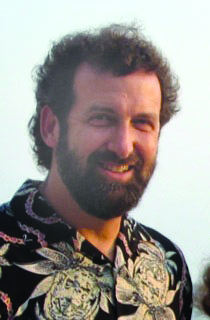
It is history’s best-documented story of genocide, the attempt to extinguish a whole people: the Holocaust.
When the Nazi Party came to power in Germany in 1933, its leaders set out to destroy everyone they felt was a threat to the German state: Slavic peoples, Gypsies, homosexuals, the disabled, Communists, Socialists, Jehovah’s Witnesses and Jews.
In 1933, the Jewish population of Europe was an estimated 9 million. By 1945 the Germans and their collaborators had killed two-thirds of them as part of Adolf Hitler’s “Final Solution.” Many other German officials from this period have come to personify evil: Adolf Eichman, Joseph Goebbels and Heinrich Himmler, for example.
Probably the best-known literary work about the Holocaust is “Anne Frank: the Diary of a Young Girl.” Written by a Jewish girl, is was an account of her experiences while hiding from the Nazis for two years in German-occupied Amsterdam in the Netherlands. Tragically, the family was apprehended in 1944, and Anne Frank died of typhus in the Bergen-Belsen concentration camp. The book was later adapted as a play and motion picture and translated into more than 60 languages.
Recently the Morgan Hill United Methodist Church hosted a guest speaker with a similar tale, though with a happier result. Marty Brounstein is an author, speaker and management consultant living in the Bay Area. A former teacher, he has written several books, including “Communicating Effectively for Dummies” and “Coaching and Editing for Dummies.” His latest volume is “Two Among the Righteous Few.”
Brounstein began his presentation by asking the following questions:
– Would you be willing to help someone in great danger?
– Would you help even if it were to put yourself in great danger?
– Would you take this risk if the people were different and hated by society?
Frans and Mien Wijnakker were a young Roman Catholic couple living in Dieden, a small village in southern Holland, during World War II. When the war broke out, Holland declared neutrality, but in May of 1940 the German Army invaded the country; within a week the Queen and government fled to Great Britain as the Germans occupied their country.
One day in 1943, Frans traveled to Amsterdam on a business trip when someone asked him to take a young Jewish girl home to hide her from the Germans. He became part of an informal underground network of Dutch people seeking to save Jews from annihilation by secreting them in their homes.
This was a dangerous thing to do, for the Germans would severely punish – even execute – people violating the law. Frans and Mien built a secret room within their house and eventually saved the lives of nearly two dozen Jews through their courageous efforts.
What makes Brounstein’s story more touching is that his wife is one of the Jews saved by the Wijnakkers, and he has painstakingly assembled memories from the few people still alive who participated in this great adventure. The Rev. Patrick Davis, pastor of MHUMC, has called the book “A remarkable story of courage, of bravery to help others in dire need, instilling hope during one of the most horrific times in human history.”









